site search
online catalog
1768 PATTERN CHARLEVILLE MUSKET WITH US SURCHARGE

Hover to zoom

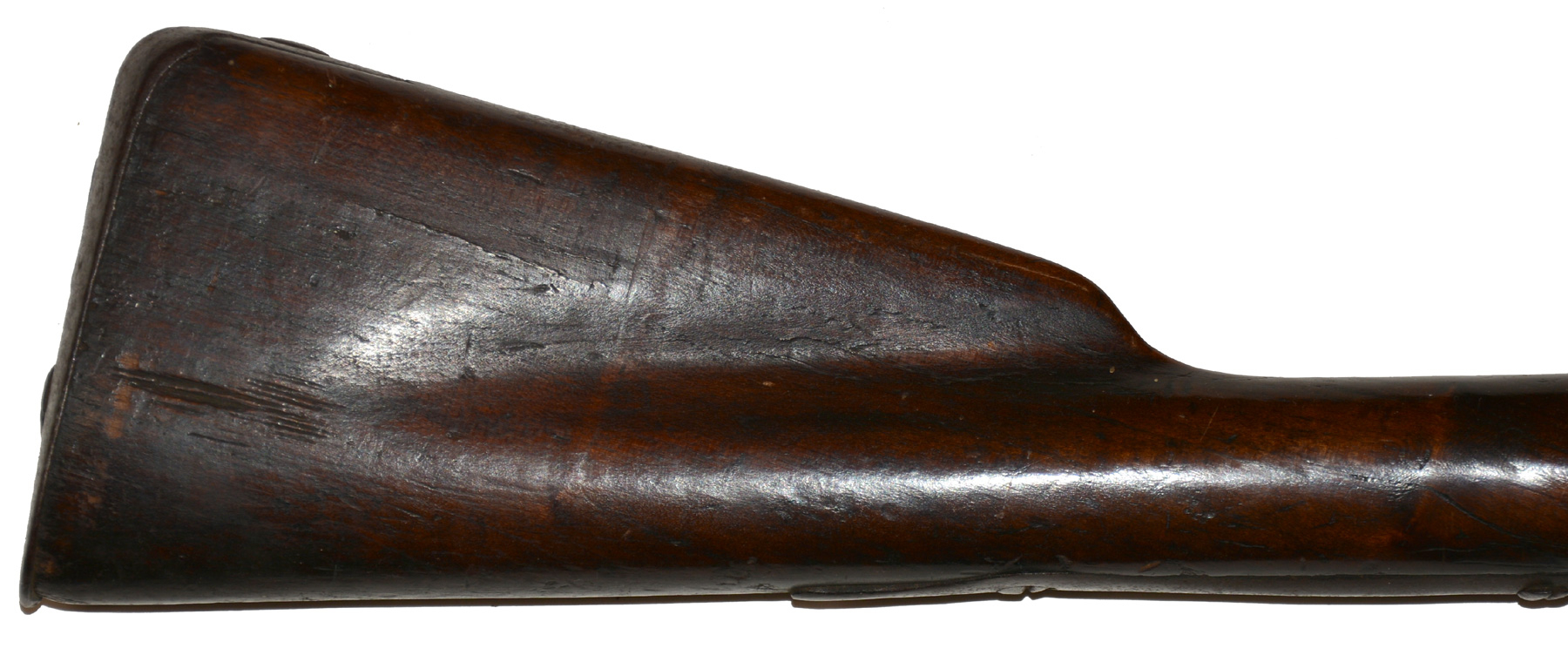


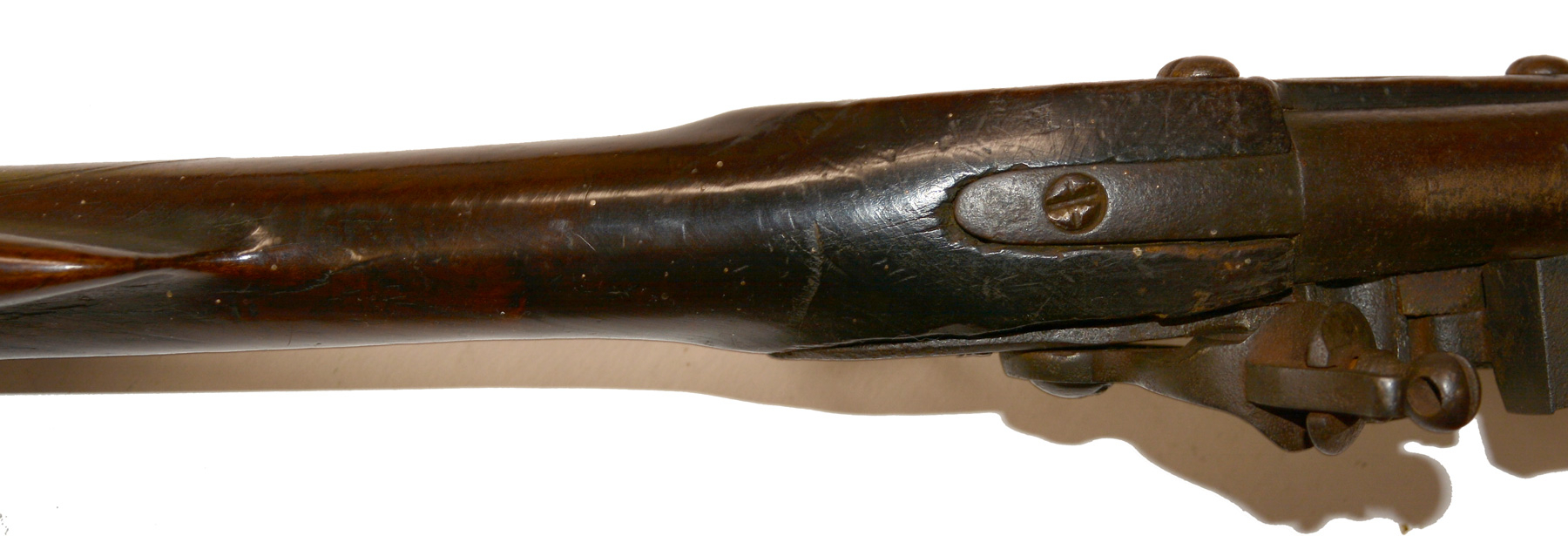

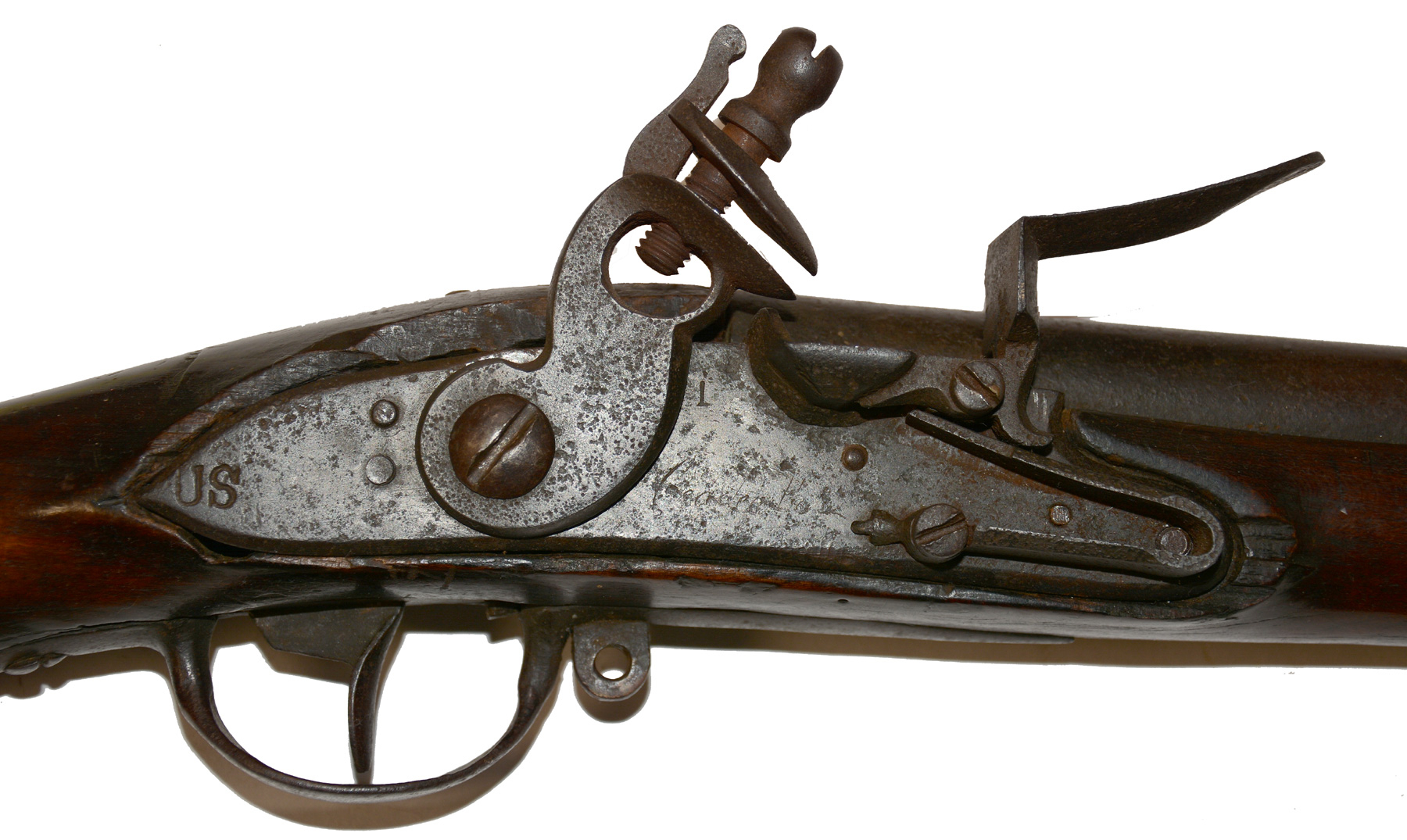
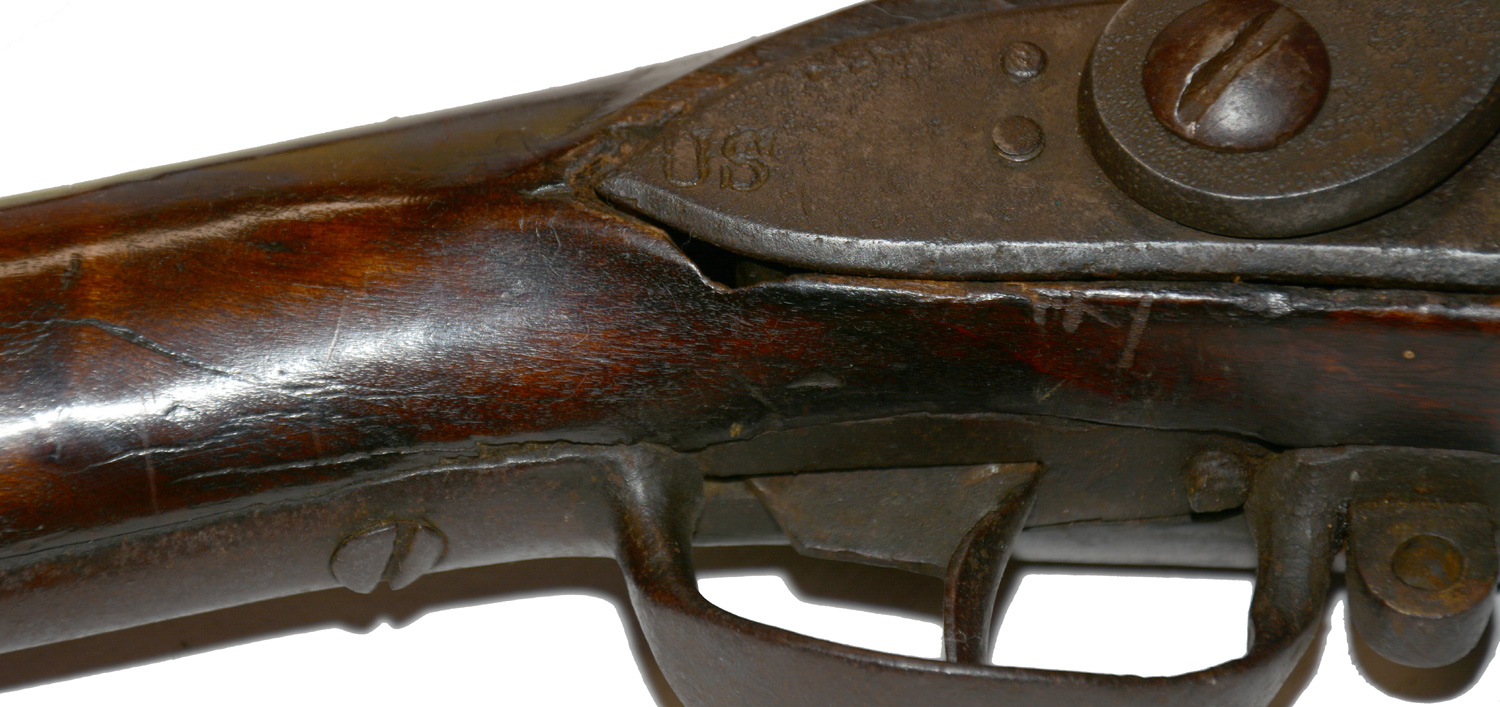
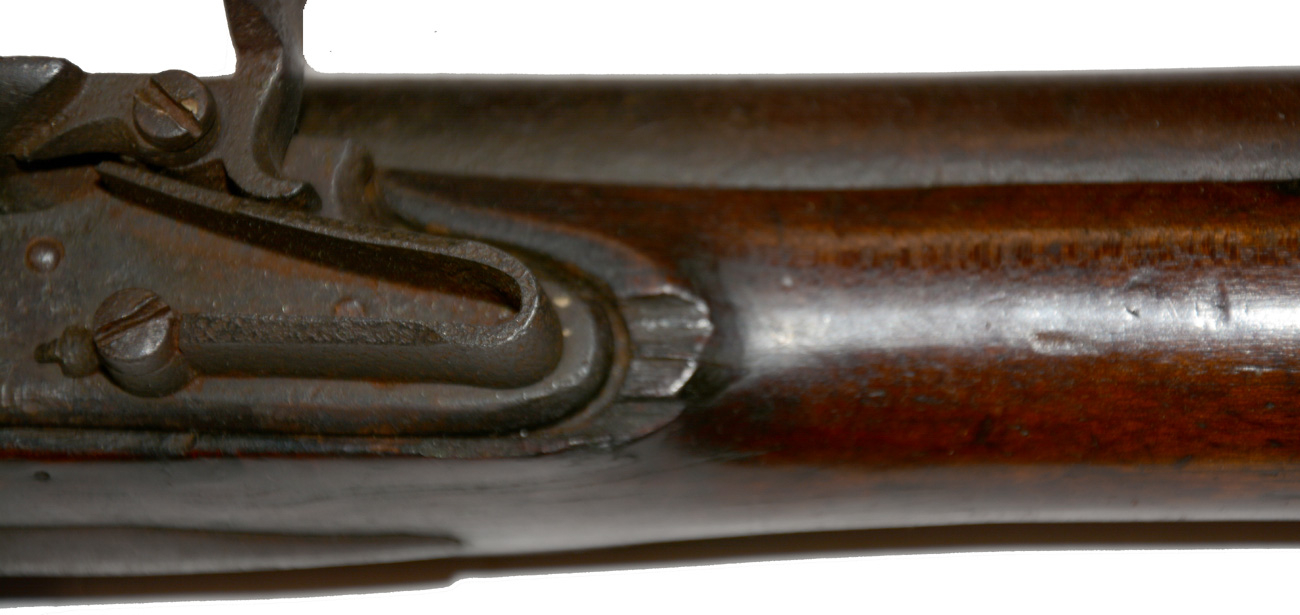
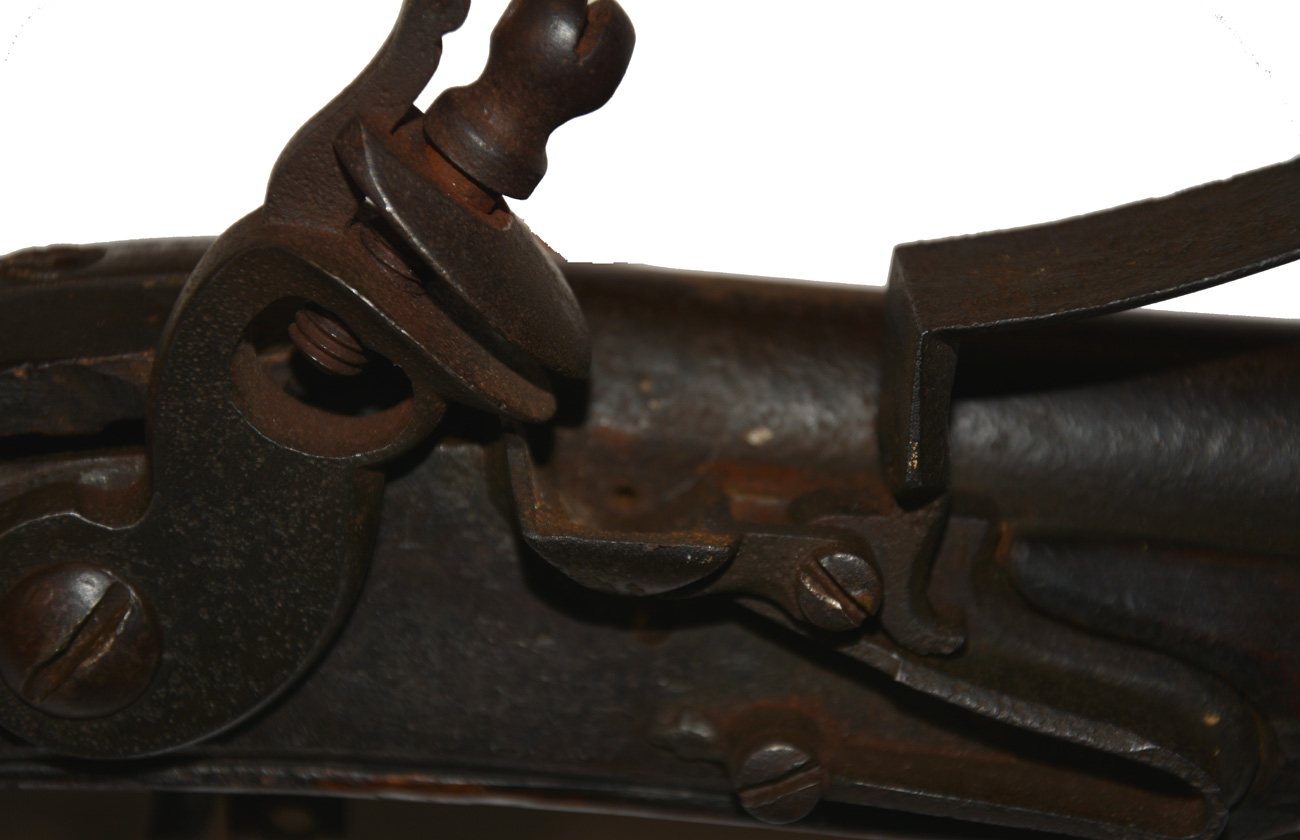
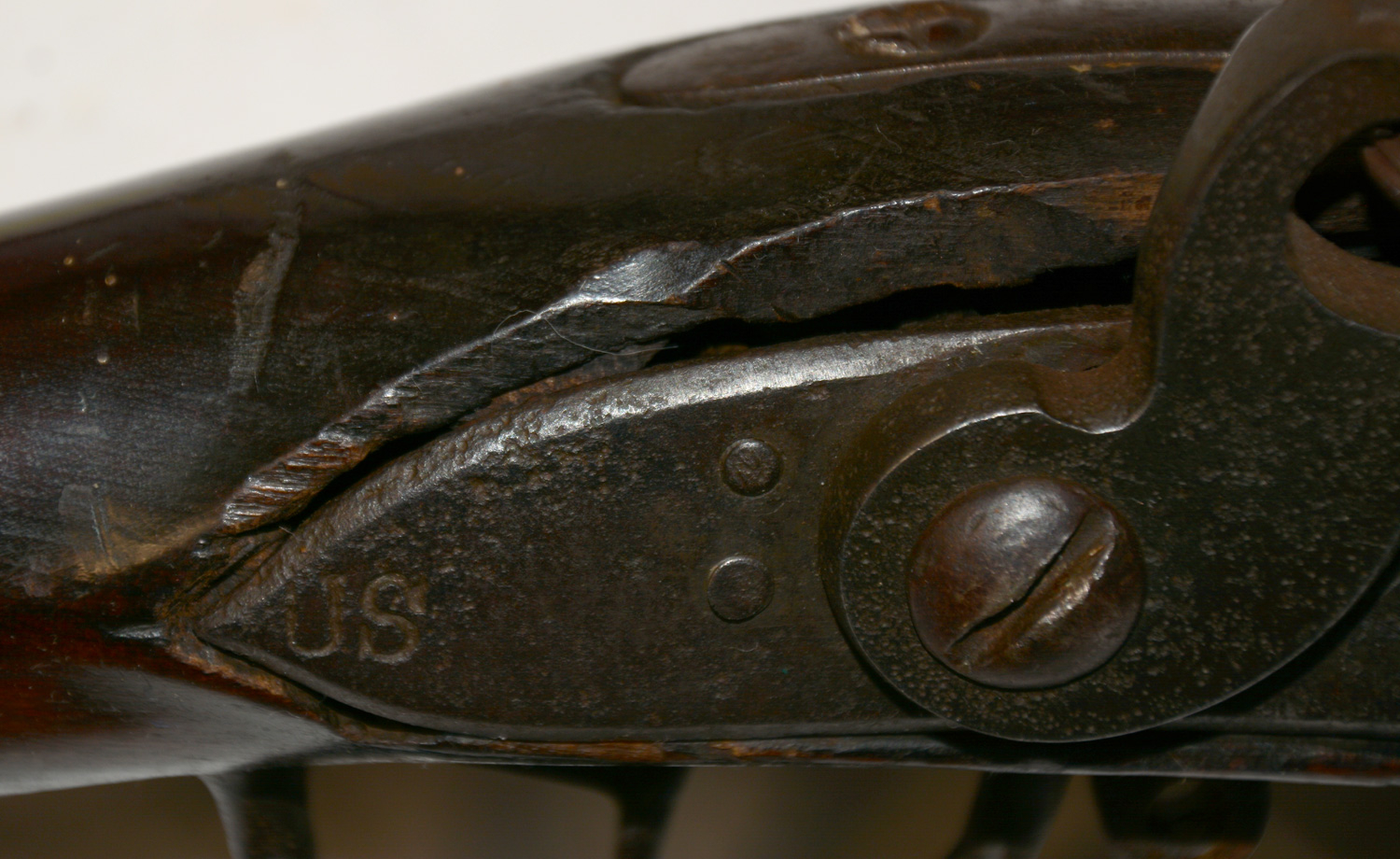
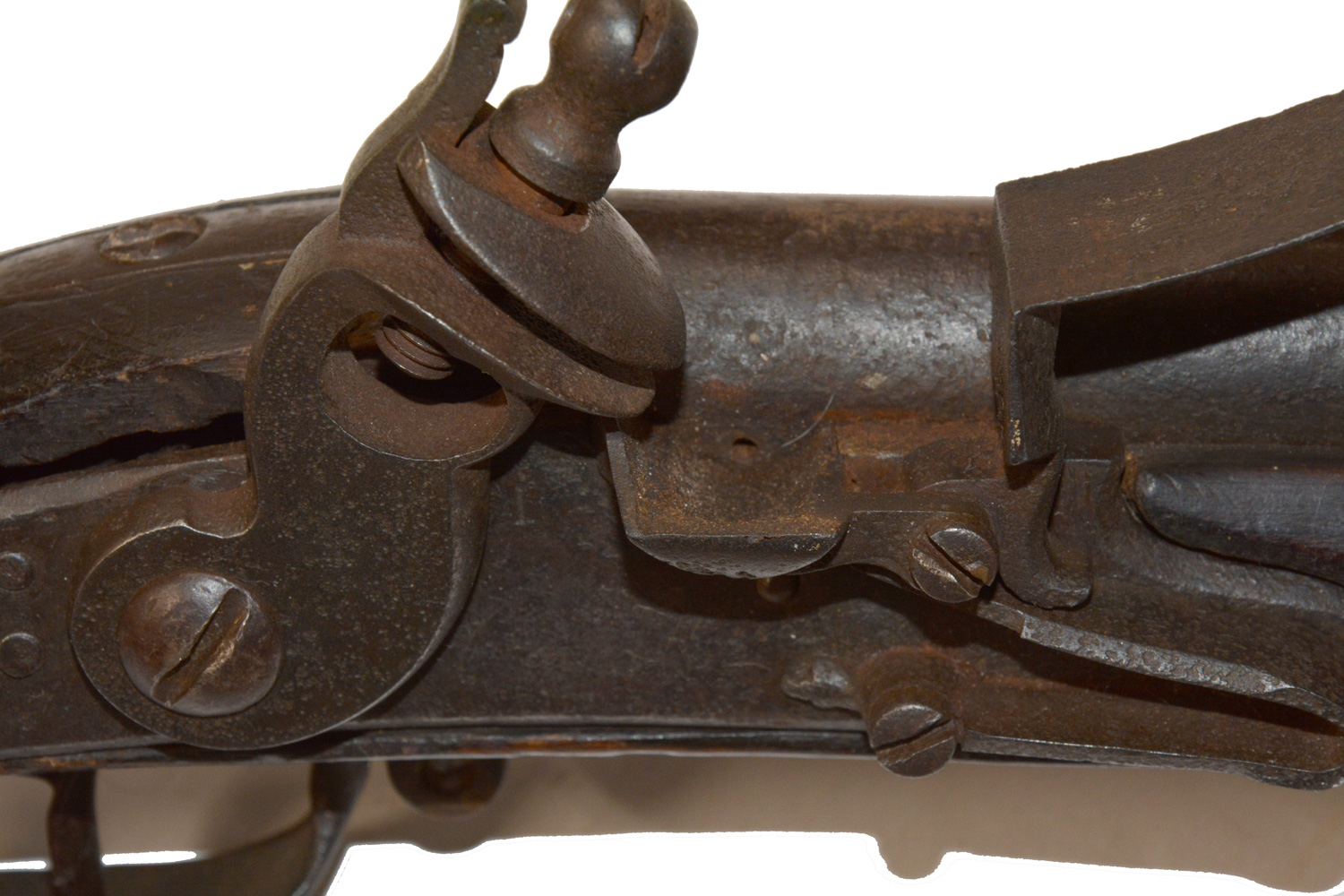
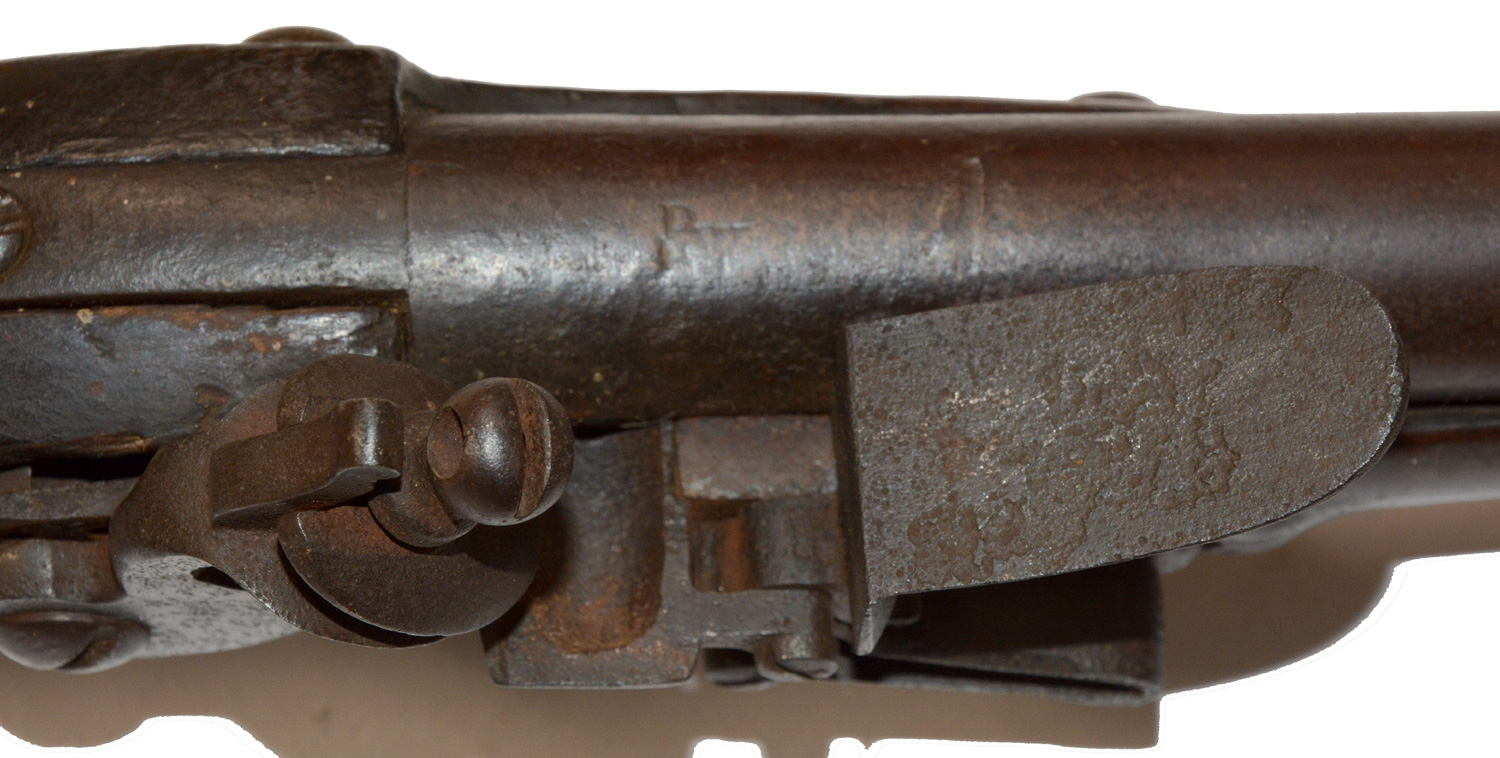
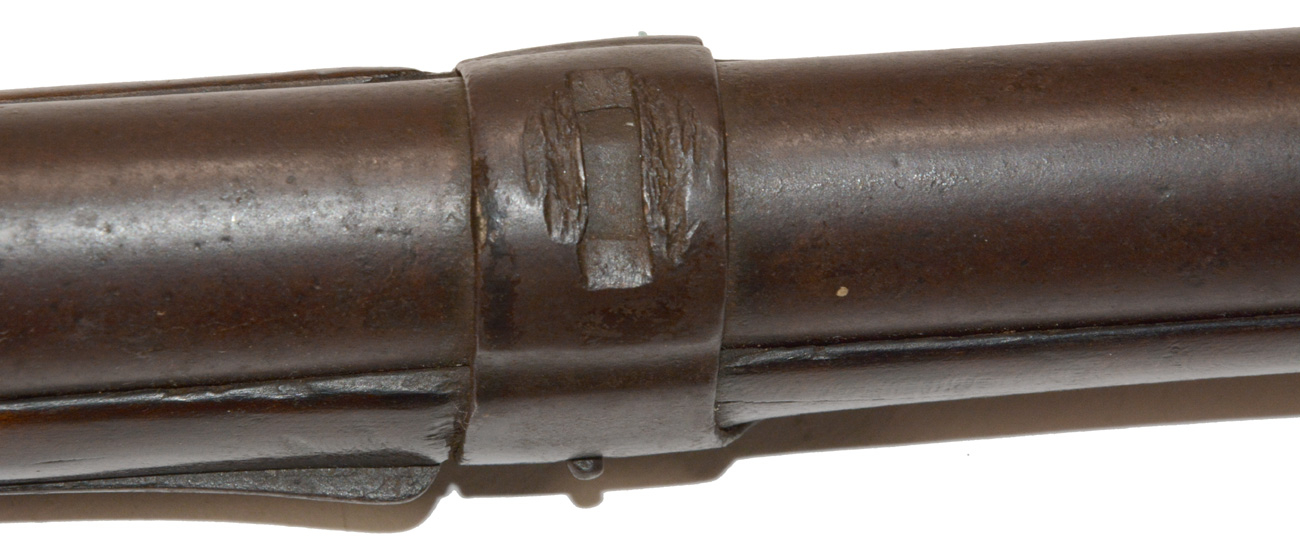
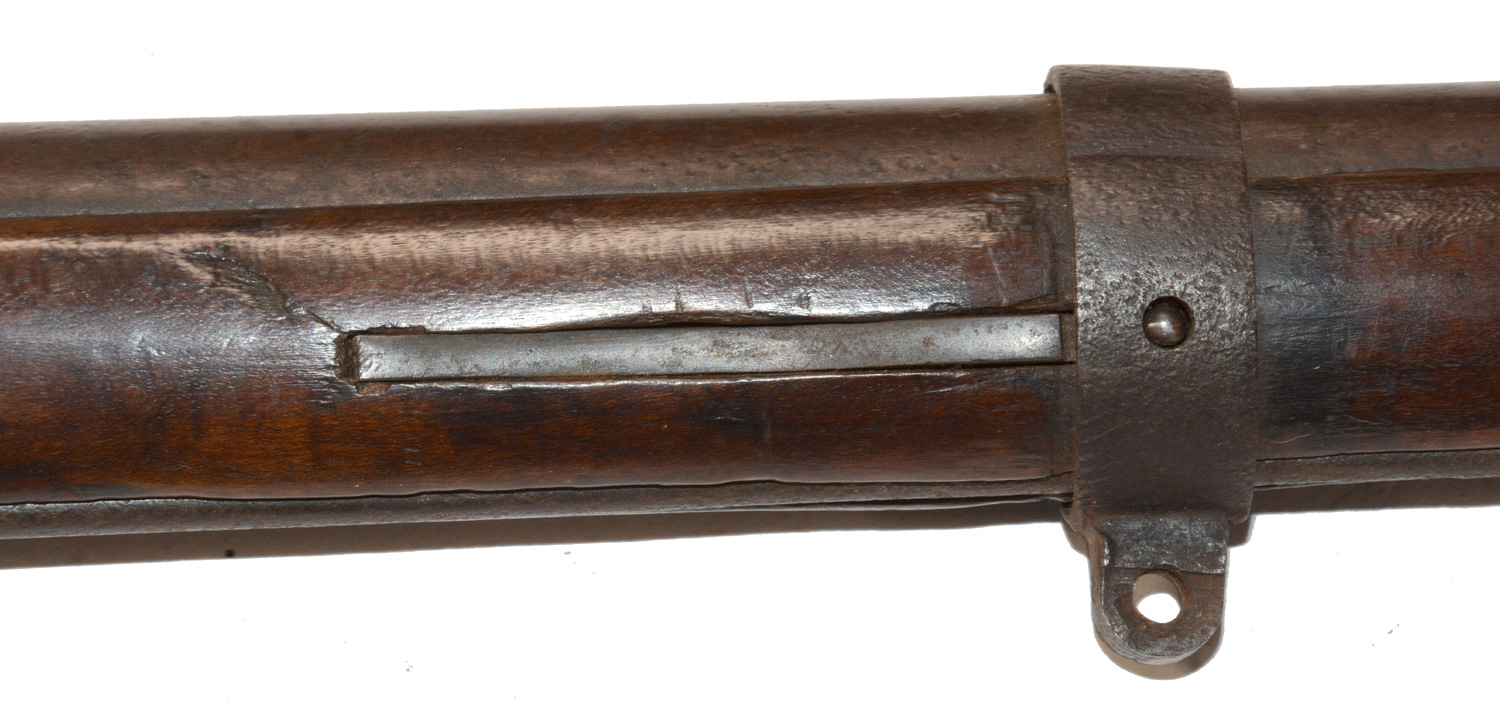
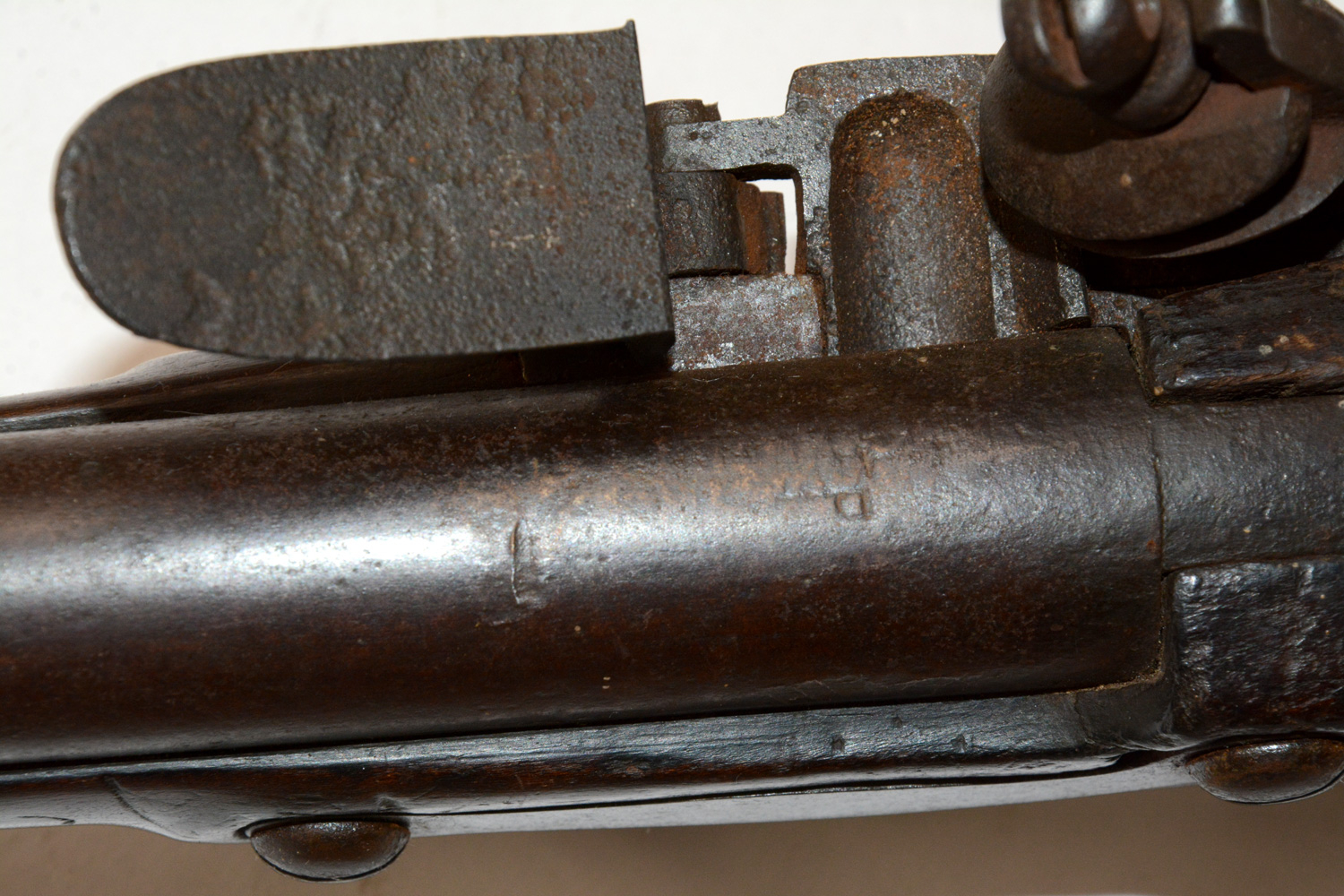
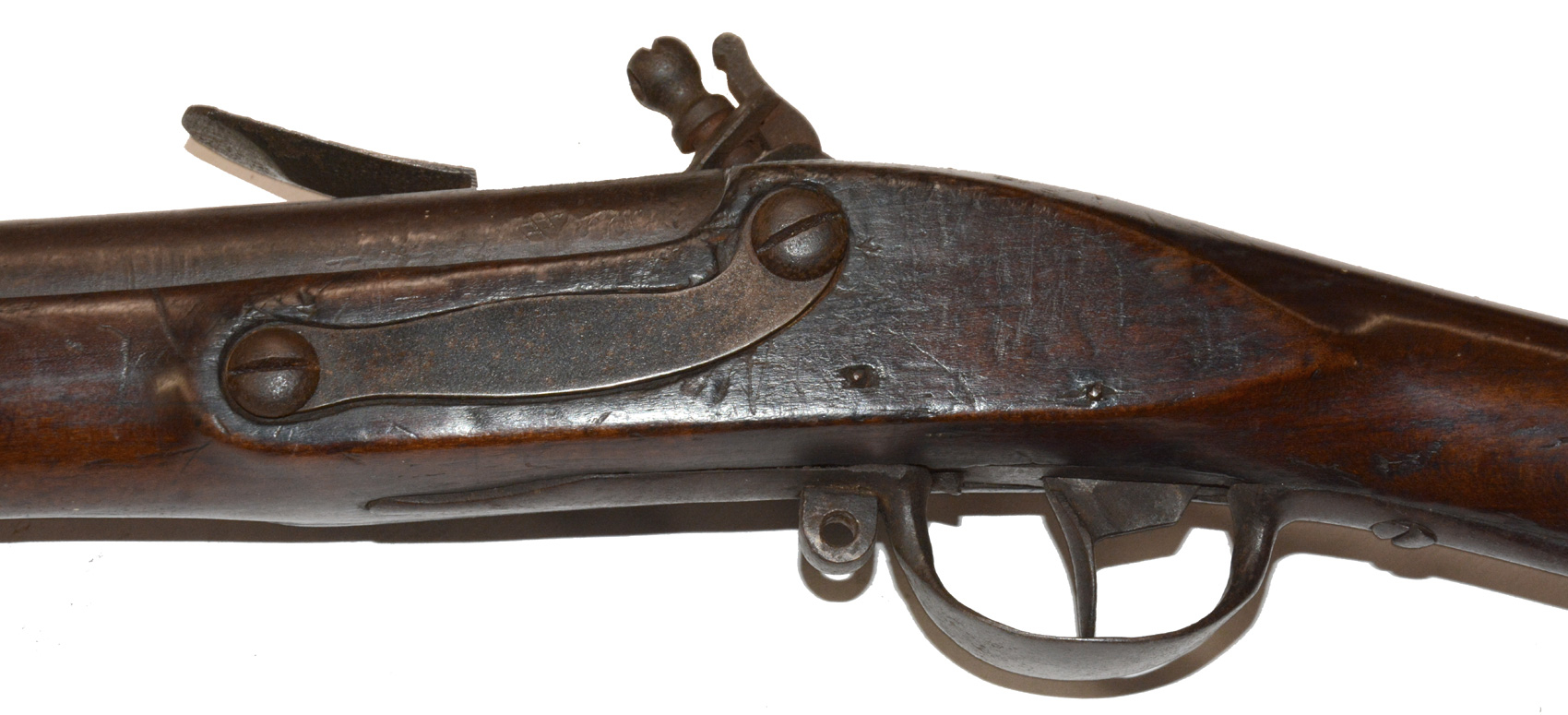
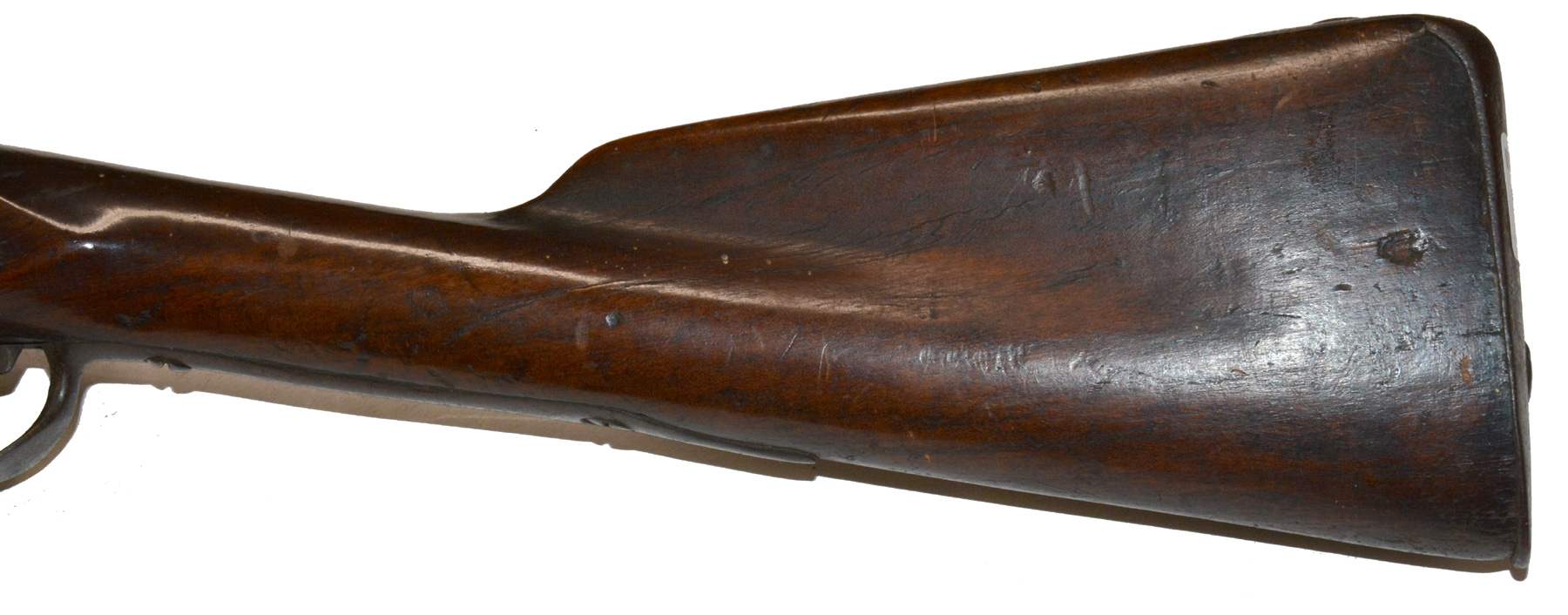



$6,975.00 SOLD
Quantity Available: None
Item Code: 401-44
This is a nice looking, “attic” condition Revolutionary War infantry musket in good condition, not only a Charleville in the general sense applied to French import arms, but made and marked at the Charleville armory itself, and bearing a small US surcharge at rear of the lock plate indicating it remained in U.S. government hands into the 1790s. The musket is in original flintlock configuration and has its full length, 44-inch smooth-bore barrel firing a .69 caliber ball or buck-and-ball cartridge. The rear barrel band, like the middle and upper bands, is held in position by a band spring, instituted in 1768. Middle barrel band is a replacement. The bayonet lug is correctly in place on top of the muzzle, a position changed for the Model 1771 and returned to in the Model 1774. The top breech shows a “D” arsenal mark, used at Charleville.
The lock is the standard configuration with flat plate, reinforced hammer, and faceted iron pan. The plate shows a rubbed but visible “Charleville” marking forward of the hammer and another, rubbed, partially visible “D” above it. The rear of the plate is stamped with a “US.” The location, size, and form of the stamp suggest it was applied while in Federal hands, among thousands of muskets turned in by discharged soldiers or still in government hands, that were maintained (more or less successfully,) cleaned, repaired, and sometimes assembled by government workmen from 1783 to about 1794. The application of the US stamp follows 1777 directions from Washington for marking government property and seems to have been applied to arms at various times from 1778 to 1812 depending on where the arms were located.
The stock has a nice, untouched, aged patina, with typically nice French contours, intended to help lighten the musket, particularly in the molded and carved buttstock with a deeply fluted, raised comb, producing a prominent handrail. The iron buttplate fits well. The stocks has good color and surface, though with handling marks, very old, shallow scrapes, etc. The lock apron has good edges, but does show a chip at the front, a little shrinkage and chipping at the upper rear, and chip at lower rear where the mainspring likely slipped and struck the wood. The surface of the lock is fairly smooth, gray in tone with some light pitting, matching the hammer. The markings are good, especially for a musket passing through Federal hands where the metal was often aggressively cleaned before application of the US stamp. The barrel is generally smooth, brown metal with some thin crustiness along the edge next to the forestock and corrosion around the breech that is shared by the flash pan and frizzen. There one small, short gouge forward of the D stamp, and there is little shrinkage around the breechplug tang. The edges of the side flat are good, though with usual narrow gaps around the side plate.
The iron furniture is good. The sling swivels are gone, which is often the case. Band springs are in place. The wood behind the lower band shows a stable, narrow crack on the bottom, likely from the ramrod channel. A slight gap along the rear edge of indicates the band moved against the wood or might have been taken from another musket. The band is the proper configuration, but the top shows an open notch, likely from the addition and subsequent removal, of a rear sight. Schmidt, in describing a “typical U.S.-marked French musket,” mentions a brass sight attached to the rear strap (Vol.1, p. 15.) In this case a later user chose to remove it from the band, as some crude chisel marks show. The forestock has nice color, though with some dark stains and a few old, white paint flecks from storage in someone’s basement or garage. The edges along the barrel show some rounding from handling and a few narrow chips. An iron ramrod that looks like it has been with the musket forever is still in place, though showing pitting and a few bends. Mechanics work fine for their age, are just a bit stiff.
Imported in large numbers, French muskets produced at Charleville and other armories were crucial for American forces in winning the Revolutionary War and served as models for the first muskets produced at U.S. armories. This is an attractive example with a nice patina to the wood and metal, showing just legitimate signs of age and use during its long and significant history. [sr] [ph:L]
DISCLAIMER: All firearms are sold as collector's items only - we do not accept responsibility as to the shooting safety or reliability of any antique firearm. All firearms are described as accurately as possible, given the restraints of a catalog listing length. We want satisfied customers & often "under" describe the weapons. Any city or state regulations regarding owning antique firearms are the responsibility of the purchaser. All firearms are "mechanically perfect" unless noted, but again, are NOT warranted as safe to fire.
~~~~~~~~~~~~~~~~~~~~~~~~~~~~~~~~~~~
THIS ITEM, AS WITH ALL OTHER ITEMS AVAILABLE ON OUR WEB SITE,
MAY BE PURCHASED THROUGH OUR LAYAWAY PROGRAM.
CLICK HERE FOR OUR POLICIES AND TERMS.
THANK YOU!
Inquire About 1768 PATTERN CHARLEVILLE MUSKET WITH US SURCHARGE
Most Popular
Historical Firearms Stolen From The National Civil War Museum In Harrisburg, Pa »
Theft From Gravesite Of Gen. John Reynolds »
Selection Of Unframed Prints By Don Troiani »
Fine Condition Brass Infantry Bugle Insignia »
Large English Bowie Knife With Sheath 1870’S – 1880’S »
Imported (Clauberg) Us Model 1860 Light Cavalry Officer's Saber »
featured item
CIVIL WAR MUSICIAN’S GROUPING INCLUDING WARTIME IDENTIFICATION DISK, IDENTIFICATION SHIELD, AND FREEMANTLE ROTARY VALVE CORNET/VALVED BUGLE: JOHN J. WEAVER- 10th and 56th PA- AND CUTLER’S BRIGADE BAND 1861-1865
This wonderful grouping includes two wartime identification badges, a rotary valve cornet dating about 1864, along with his GAR membership badge and veteran’s id badge. To top it off, in addition to prior service in the 10th PA from April 26 to… (1179-420). Learn More »


